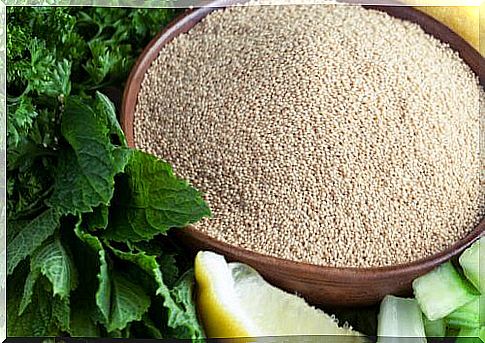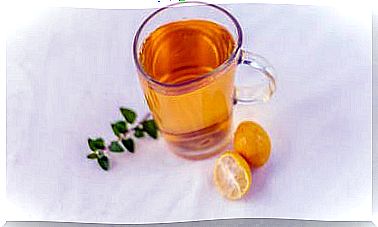The Properties Of Amaranth
Amaranth is a cereal that was cultivated thousands of years ago by pre-Columbian peoples and, like quinoa, it was considered a ‘ sacred cereal’.
In addition, as the following study indicates, amaranth is one of the cereals richest in iron, calcium and protein. There are several species distributed in different countries of Latin America, where it is mainly produced.
Because amaranth needs approximately 50% less water to be cultivated in relation to other cereals, it is very economical and ecological, as well as having great nutritional qualities.
On the other hand, it adapts to almost all types of climate and soil, making it easy to grow. Do you want to know more about this fabulous cereal? Keep reading.
Amaranth can almost be consumed in its entirety, so it turns out to be very usable. Its leaves can be used in stews, its stems can be used as fodder for animals or as a vegetable and its seeds can be used to make gluten-free breads, among other things. The amaranth seed should preferably be cooked, and this cooking is very quick and easy.
Furthermore, amaranth contains vitamins A, B1, B2 and C. Therefore, it can be very beneficial for the cardiovascular system, as it can help us reduce bad cholesterol.
Likewise, it can also be good for our digestive system, not only because of the vitamins it presents, but also because of its fiber content. This has diuretic properties that can promote digestion, as well as the elimination of certain toxins through the excretory system.
As for its incorporation into the diet of children, it is recommended that amaranth begins to be consumed with caution after seven months. This will give your child’s body iron.
High protein levels in amaranth

This cereal is high in protein. In fact, its seed contains between 12 and 19 grams per 100. Thus, it has as much protein as wheat and more than barley, corn or rice.
In addition, it is one of the few cereals, along with quinoa, that contains lysine. This is an essential amino acid that performs numerous functions in our body.
Among them we find its role in the production of collagen, along with arginine. It is also said that it can help us strengthen the immune system to fight against viruses and bacteria. Thus, this seed can be a great ally of our defenses and our skin, although there is no scientific evidence to prove it.
Amaranth bread recipe

Ingredients
- 2 cups of amaranth flour.
- 2 cups of wheat flour.
- 1 tablespoon of honey.
- 1 l of hot milk.
- ½ cup of water.
- 1 teaspoon salt.
- 30 g of fresh brewer’s yeast.
- 3 tablespoons of sunflower oil.
Elaboration
- First, mix the sunflower oil, milk, honey, and hot water.
- Also, dissolve the yeast in a few teaspoons of warm water. Then, let it ferment and add to the mixture made.
- Next, on the counter, mix the wheat flour and amaranth flour with the salt.
- Then, make a hole, add the liquids and mix until it forms a firm and tender paste. You must mix it very well.
- Then, cover it and let it rise until its volume doubles.
- Once doubled, knead again and put in an elongated mold (the kind used to make an English pudding) oiled and again let it rise.
- Finally, bake for approximately 45 minutes over medium heat.
And ready! Start enjoying this delicious bread and all the benefits of this seed. What are you waiting for?









